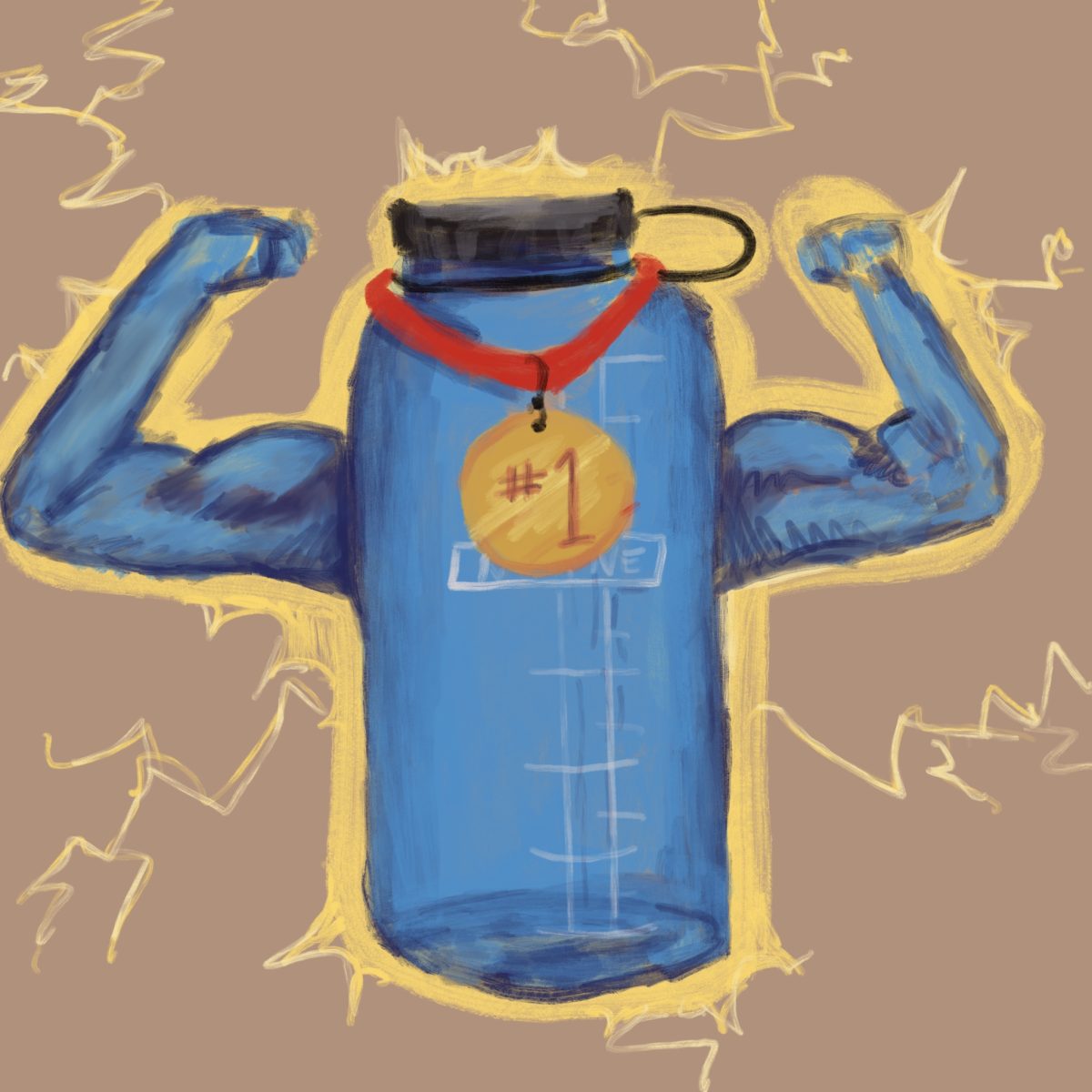A cold war rages in the world of water bottles. Many have an aggressive brand allegiance, whether it be to Klean Kanteen, Hydro Flask, Yeti or Stanley. 2019 saw the rise of the Hydro Flask, and late 2023 saw the rise of the Stanley Quencher. Some love them, some hate them. I would like to offer an alternative to all of this senseless violence: the humble Nalgene.
Fifteen years ago, when my mother was training for triathlons, she used a red, wide-mouth, 32-ounce Nalgene bottle. Some of my first childhood memories are contained in this bottle; it has been taken camping and on road trips for as long as I can remember. It was even present at my high school graduation. After so many years, my family still uses this bottle with no issues. About five years ago, my parents bought a Hydro Flask for each member of the family. In this time, most of the outer paint has flaked and the lids have even started to break off into their two components, rendering the hanging hole useless.
Nalgene water bottles are frankly a marvel of engineering. A large portion of this is due to their streamlined construction. These bottles only have three parts: a lid, a body and a hinge. Most reusable water bottles are sealed with the help of a circular rubber component called an O-ring or gasket, which sits in a groove inside of the top of the interior bottle lid. When the lid is tightened, the rubber expands in its channel and creates a watertight seal. Though this creates a reliable seal, O-rings are often a pain to clean and can very easily trap liquids and even grow mold.
Amazingly, Nalgene bottles don’t need O-rings. The lids of their bottles are made with Low-Density Polyethylene (LDPE) and Polypropylene (PP) which possess excellent elastic properties. The bottles contain a groove where an O-ring would normally sit, but because of its elastic properties, there is no need for one. When the lid is tightened, the lid groove slightly wraps around the more rigid body, sealing the inner contents. But they didn’t just stop there. The threads of Nalgene bottle lids are buttressed, which means one side of the thread is angled at 90 degrees instead of the usual “v” shape commonly associated with screws and bolts. This design converts most of your lid-closing effort into axial force. This increases the pressure of the lid on the body, further strengthening its seal.
There are, of course, two major drawbacks to Nalgene bottles: they are made of plastic and have subpar thermal retention. The inability to keep water cold for long is definitely a dealbreaker for some, but if you want a sturdy workhorse water bottle, Nalgene reigns supreme. Nalgene bottles are extremely lightweight and inexpensive. A 32-ounce, wide-mouth Nalgene bottle costs and weighs significantly less than half that of a standard 32-ounce Hydro Flask bottle. Nalgene bottles also have the benefit of visibility into the body from the exterior.
Nalgene bottles are nearly indestructible. The bodies of Nalgene bottles are made out of Tritan, an extremely clear and high-performing plastic invented in 2008 by global specialist materials company Eastman. This material outperforms its predecessor, polycarbonate, in every single metric. Unlike polycarbonate, Tritan and every other plastic used in Nalgene bottles are free of harmful chemicals Bisphenol A (BPA) and Bisphenol S (BPS). If for some reason you wanted to, you could even pour boiling water in it with no deformation.
Nalgene water bottles are lightweight, low-maintenance, inexpensive and sturdy. We are all on the go, so if you need a practical water bottle to stay hydrated, Nalgene is the best choice.
Categories:
The winner of the water bottle war
Why Nalgene comes out on top
More to Discover





